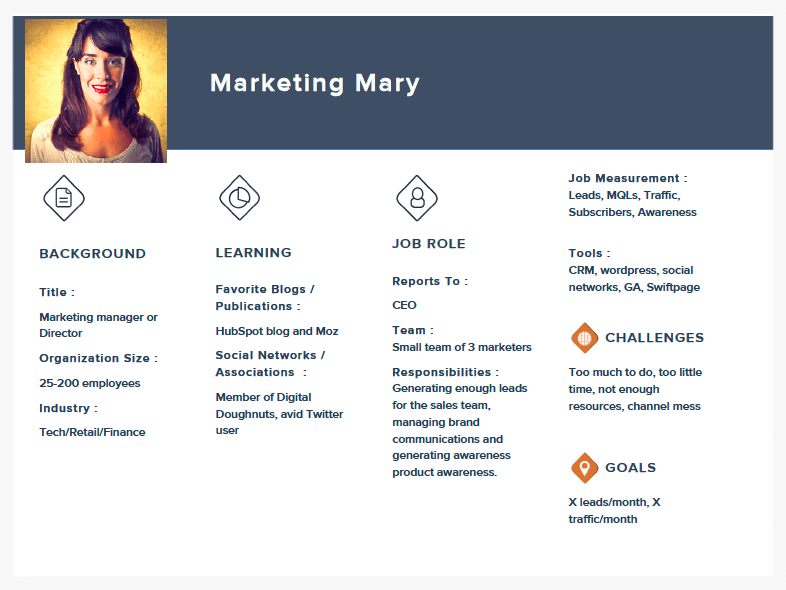The Painless Guide To Customer Personas: The Superior Way
Do you work in marketing? Are you struggling to capture the attention of your target audience?
If so, you need to read this article to find out what you should be doing.
One of the most important steps in marketing is understanding your customer. All too often, marketers get caught up in the minutiae of their work. Forgetting that they are working to create something for someone else’s use.
So let’s go walkthrough what are “Customer Personas” and how they can help your business.
What are Customer Personas?
A persona is a fictional representation of your customer. One that you have created to help you understand their traits, needs, and behaviours. They can be a powerful tool for any business looking to improve customer experience.
Personas are a way to create customer-focused marketing messages. Creating personas is more than guesswork, it’s an exercise in understanding your customers. Their needs and the problems they’re trying to solve. Once you create your personas, you can use them throughout the entire process of generating and presenting your content.
How to Build Customer Personas
The persona is a representation of your ideal customer. Start with attracting your “average” customer. This will help you to create content that will resonate with your target market. In time you will build a good rapport with them.
A significant part of creating personas is identifying what motivates them. These motivations are the key to understanding your customers and also your competition. Once you know what drives your customers, it will be easier for you to come up with content that they will want to read about.
Customer driven content is a must in today’s digital landscape. Consumers are savvy. They know if you’re not providing them with content that is relevant to them, they will go to another source. To avoid this, you need to identify customer pain points. In other words figure out how your company can help solve their problems.
7 Advanced Tips on How to Completely Understand Your Customers
In this section, we will highlight seven advanced tips to help you completely understand your customers.
Surveys, focus groups and interviews are not the only ways to understand your customer. It is a common misconception that the only way to achieve this is through traditional methods. Make no mistake! There are many more advanced strategies that can help you get to know your customers better than ever before. Understanding your customers is the key to creating products that they’ll love.
Below are some tips to help you identify what your customers want. You can use this information to improve their experience.
1. Find out what they without a doubt need from your business
The best way to start any business is to learn about the customers. Different people want different things, and it’s important to offer what they need. Consider what you can offer for your customers and how they can get the most out of your company.
2. Discover how best you can serve your customers
Whether it be through social media, email, or the phone, your company’s customer service department will need to deal with a wide range of issues. As such, it is important that you know what the best ways are to serve your customers.
3. Keep an open mind and try new things
It is important to get out of your comfort zone and try new things. Life is about new experiences and discovering your passions. The more you experience, the happier you will be because you have a better understanding of who you are as a person.
4. Put yourself in the shoes of your customer
What would you prefer: A customer-centric or a product-centric company?
Product-centric companies focus on creating products based on what the customer. Yet, customer-centric companies focus on the customer’s wants and needs which produces a better product for them. This leads to less wastage of resources, higher customer satisfaction, and more innovation.
5. Listen more than talk, ask questions rather than give answers
When you’re in a conversation, it can be tempting to think that the other person wants answers, but this isn’t always the case. Most of the time other people want to feel like they’re listened to and cared about. Ask questions, listen more than you talk, and try to figure out what their needs.
6. Make decisions based on what they want, not what you think they want
The customer is always right, but what does that mean? It’s time to stop guessing and start listening. If people feel like they were a part of a decision, then they will be more satisfied with that decision. Too often we forget that it’s essential to take the time to ask them about their preferences.
7. Always be on the lookout for new trends and opportunities
It can be hard to keep up with the latest trends and opportunities. Luckily, you don’t have to. This is why you hire a Digital Agency like ourselves to help you.
A key component of an effective CRM strategy is the ability to identify patterns in customer behaviour over time. Behavioural analytic technology can provide you with activity data for your website. You’ll be able to understand what path your customers are taking. As well as when they’re doing certain things on your site, so you can improve upon those elements.
Six sample customer personas that you can use to start
A customer persona is a description of a fictional character that represents a typical customer in the target market. The goal is to answer questions such as: Who are they? What do they need? How do they make decisions, and what keeps them awake at night?
Personification of customers can be very beneficial for companies trying to focus on their target market. By getting into the shoes of the customer, it becomes easier to understand their needs and wants.
The goal of creating personas is to create a 360-degree view of the customer to serve them with relevant content. Here are 6 sample customer personas as a guide:
3 B2C Buyer Persona Examples
Here are some examples of business-to-customer buyer personas. This is a person-to-person transaction where they are buying with their own money and choosing what they want to buy.
When writing for a B2C we only need to include work related information and not their responsibilities or roles. In the case of a B2B buyer persona more information about their work and responsibilities in needed. You can use copywriters to produce higher quality content. This allows you to focus on the personal aspects of your potential customers.
In our buyer persona examples, you can see that a persona doesn’t have to be long in length to convey a message.



3 B2B Buyer Persona Examples
The next group of buyer types is B2B. It stands for “business-to-business.” A type of business that works with or supplies other businesses.
The B2B buyer persona examples (like the ones above) focus on individuals. Yet, the examples include more specific details about where the customer works, what they do, and their interactions with their organization. Some people may dictate the purchasing decisions. Specific information about what they do with your product is important for this persona.
This is an example of a ClearVoice B2B persona. It describes John in a limit-free manner, so you know what John does and for whom he works.



Conclusion: The Importance of Developing a Strong Persona for Your Marketing Campaigns
The importance of developing a strong persona is all about understanding your customers better. The digital era has changed the way consumers shop. Business owners are struggling with how this change will affect their own business. Understanding your customer’s wants and needs is the key to effective marketing campaigns. A successful campaign requires creating a strong persona that reflects who your customer is, what they want, and how they think. This gives you an idea of where to focus your marketing strategy on what will reach them best.
Developing a strong persona for your marketing campaigns can be difficult if you haven’t even started thinking about it yet. It takes time to understand who your customers are. What problems they have that need solving sand identifying who is their competition.
Identifying your competitors is an important part of any business plan. If you know who your competitors are, you can identify weaknesses. Chinks in the amor of their business model and take steps to avoid making the same mistakes.

